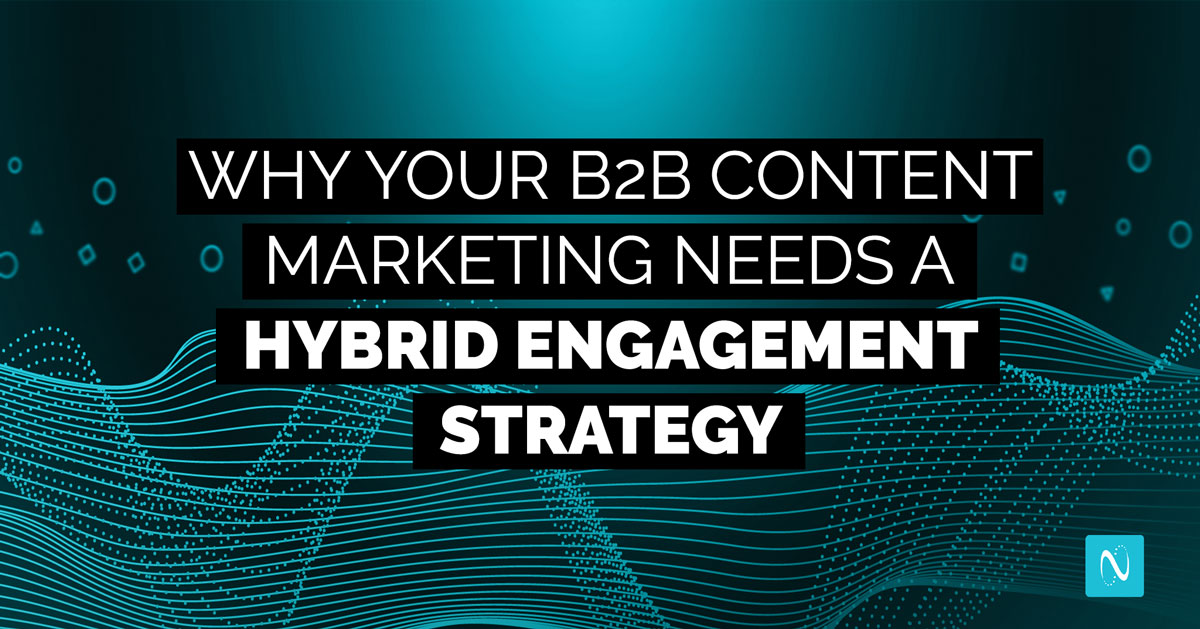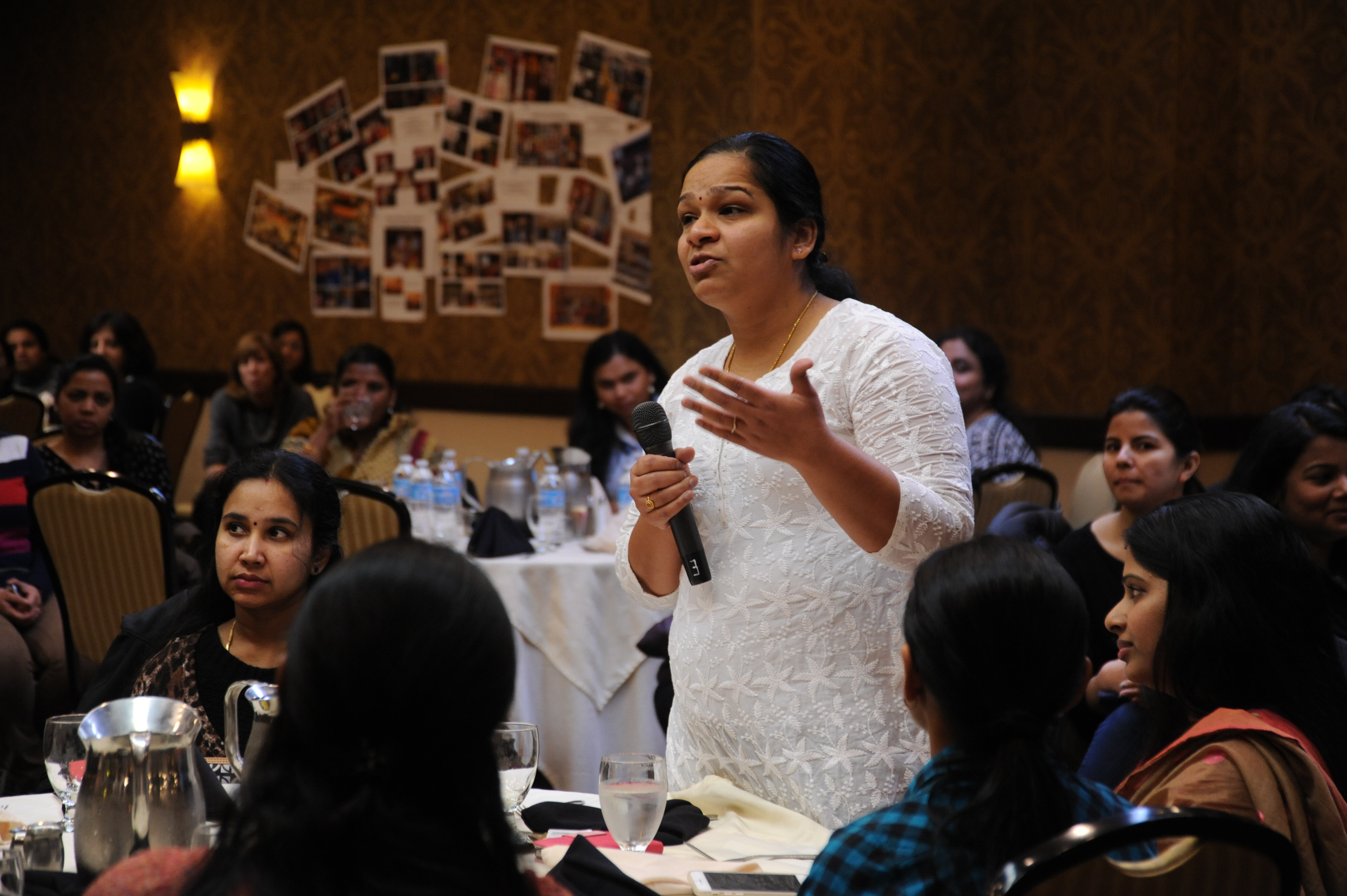With mask mandates being lifted and States reopening across the U.S., people are looking forward to the chance to connect in person once again. Despite the eagerness with which some folks and businesses are champing at the bit to get out and about, the Digital-First world is here to stay. But there has to be a middle ground somewhere here, right?
So what’s the answer?
A hybrid engagement strategy.
What It Takes to Embrace a Hybrid Marketing Strategy
For the past 15 months, things that didn’t require us to show up in person have been done via our desktops, tablets, and mobile phones. While some of these activities will be gladly left in 2020, many of these behaviors and preferences will be with us for the foreseeable future. Because of this, B2B Marketers need to move towards hybrid marketing and engagement.
To break down this trend and explore each way it’s affecting B2B marketing, NetLine joined experts from ON24 and PFL to analyze hybrid engagement and share their top tips for success.
View What’s Trending in B2B Marketing? Hybrid Engagement Strategies On-Demand now.
“The New Normal”
When can things go back to the way they were?
This is a question we’ve heard posed 32,928 ways over the last year and change. We’ve also heard the phrase, “The New Normal” about a million more times.
“When we moved to a near fully digital world in March 2020,” NetLine’s Chief Strategy Officer David Fortino said, “we did so by necessity—not by choice.” Even though we didn’t choose this path, David views the results of this past year (from a Marketing standpoint) as positive. “So many silos have been broken,” he said. “Everything has been consolidated, based on necessity. I think if Marketing organizations were to look backward, they’d agree that this result is a great thing as it’s really forced everyone to look at things and say, “we used to do X this way and we just accepted that, but maybe it never needed to be that way or perhaps it was just time to make a change.” It forced many of our clients to have fresh eyes about where they were and where they were going.”
One of the most obvious candidates for fresh eyes was anything event-related. By September of 2020, interest in virtual events was at an all-time high, according to Google Trends. (We also learned that virtual events need a lot of TLC to be successful moving forward, but that’s a story for another blog.) NetLine also observed a massive spike in virtual event interest, as we shared in our 2021 Content Consumption Report, with YOY registrations rose 2660%.
But as you can see from this Google Trends chart, interest dropped a bit during the Summer months, especially during mid-June. This was the first moment that hybrid events were considered by event organizers and event companies. Cheri Keith, Head of Strategy for ON24, has a theory on why. “If we looked at the overall share of voice, over the past year, regarding the word ‘hybrid’,” she said, “we would see it weighed a lot more heavily toward event organizers and those directly involved in putting on physical events. Of course, they want people back, their model depends on it.”
Cheri certainly sympathized with these businesses but put quite plainly that it’s their Marketers’ responsibility to consider, “what they’re going to need in order to make [a return to physical events] successful, especially when the audiences they’re marketing to are going to have varying levels of comfort.”
Understanding What the Audience Wants
Photo by Wonderlane on Unsplash
Marketing to a consumer that lives so much of their life online is more challenging than it would seem on the surface. According to Microsoft’s Work Trends Index, professionals received 40.6B more emails in February 2021 than they did in February 2020. We’re all competing for the same digital real estate with occupants with dwindling attention spans.
Eva Jackson, Director of Demand Gen Marketing for PFL, expanded upon Cheri’s ideas by sharing that, regardless of how they’re marketing, businesses want to make sure they’re connecting with their target audiences and buyers. “If there’s one thing the pandemic has taught us,” Eva said, “it’s that we can’t have all of our eggs in our delivery mechanism bucket, anymore. So we need to think about marketing more holistically.”
Thinking more holistically means being mindful of where your audience is and where they want to meet you. “Consumers are consuming digital content out of convenience and necessity,” Eva said, “and it’s changing how people interact.”
Digital marketing is now table stakes and you need to better understand how to capture the attention of your audience in this new world. In short, for your marketing to break through, it needs to not only be extraordinary, it needs to be multi-channel. Hybrid strategies combine digital and human engagement, providing multiple types of engagement opportunities to touch the customer.
The Future of In-Person Events
Some brands are going to be more eager to get back out into the world while others will be happy to remain as virtual as they can afford to be. PFL, according to Eva Jackson, said that the company would be hosting an internal get-together for employees in the coming weeks. Still, they plan on using hybrid components to make it successful for everyone. “It’s definitely a key time to realign our team. As things reopen, businesses are going to try to think about ways that they can create that human connection, whether it’s in-person or virtually.”
While plenty of audiences and businesses are ready to get back to 2019, David Fortino recognizes the folly in this thinking. “There are a ton of companies who are kidding themselves that a return to work—aka “normal”—will happen,” he said. “Most employees, when asked if they want to go back to the office, are saying, “not anywhere near the same way we did in the past.” So why should you, as a Marketer, conclude that all of your prospects would want to attend an event in person? It’s a massive leap and assumption.”
ON24’s Cheri Keith agrees. “I think one of the biggest cautions I’ve seen in the market is when people are so excited to get back that they’re doing so with reckless abandon. Whether that’s ignoring that data that they should be collecting or even just having a backup plan in place if you can’t host that event. Marketers [need to consider the needs of their] audiences.”
Plus, after a year without in-person events, there’s something to be said about the savings it’s offered to businesses. “What is the overall appetite for businesses to spend if they don’t absolutely need to?” Cheri said. “We have the opportunity to do it better moving forward, so we need to be thinking about this as an inflection point.”
David seconded this, adding that many companies won’t be lining up to pay $50-100k for a booth sponsorship, “just because.” “If you’ve been able to innovate through hybrid strategies during this time,” he said, “you now have the tools to execute which leads to better attribution and better ROI.”
While David agrees with Cheri overall, he also acknowledges the opportunity for bespoke events that cater to smaller, more intimate groups. “It controls costs, it’s a controlled environment, and you’re not just throwing darts with Sales at the end of the event saying, “Well, we talked to a lot of people and booked a lotta demos!” I don’t think that’s enough moving forward.”
Creating a Hybrid Engagement Strategy
In addition to these topics, this webinar discusses:
- The common mistakes that companies make when adopting hybrid strategies.
- Why hybrid approaches can open more doors to the C-suite.
- Tactics and approaches that work in building relationships with buyers both physically and digitally.
- The actionable steps you need to take to make your hybrid engagement strategy a success.
This webinar is well worth your time, regardless of where your business sits in the marketplace.
View What’s Trending in B2B Marketing? Hybrid Engagement Strategies On-Demand now.

